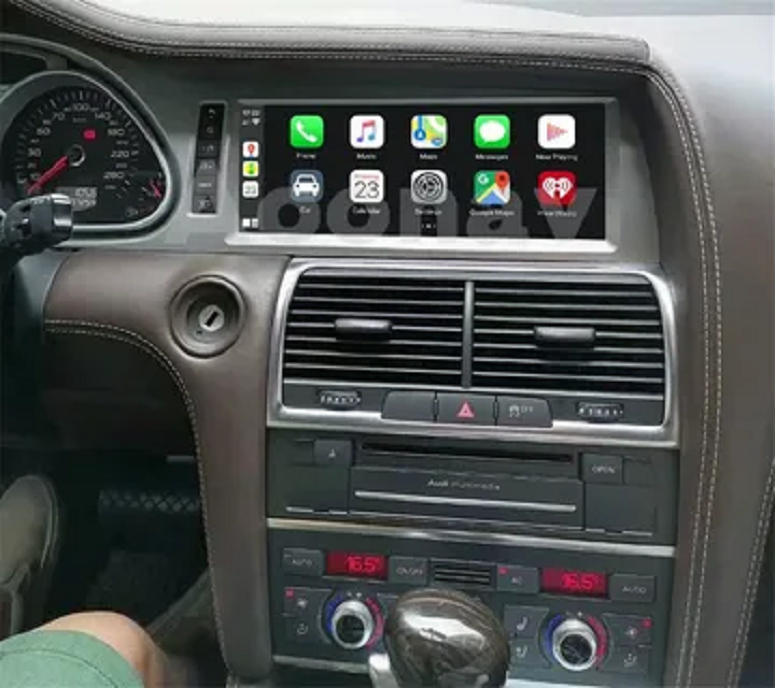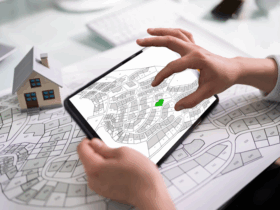Many Audi vehicles come equipped with factory-installed radios that, while functional, may lack the modern features found in today’s aftermarket head units.
Whether your Audi has a 1 DIN or Double DIN factory radio, upgrading to an aftermarket unit with Apple CarPlay, Android Auto, and Bluetooth can significantly enhance your driving experience. Additionally, many Audi models come with steering wheel controls that allow you to adjust audio settings without taking your hands off the wheel, and these can be retained with the right installation tools.
This guide will walk you through the process of upgrading your Audi’s factory radio to a new aftermarket head unit, including what you’ll need and how to ensure a smooth installation.
Why Upgrade Your Audi’s Factory Radio?
Factory radios in older Audi models might still work, but they lack modern capabilities. By upgrading to a new head unit, you can enjoy a wide range of benefits:
- Apple CarPlay & Android Auto: These systems allow you to connect your smartphone to the head unit, giving you access to music streaming, GPS navigation, calls, messages, and apps via the head unit’s screen.
- Bluetooth Connectivity: Modern radios come with Bluetooth, allowing you to make hands-free calls, stream music, and connect multiple devices seamlessly.
- Improved Audio Quality: Aftermarket head units often come with built-in equalizers and improved sound processing, which can significantly enhance your car’s audio experience, especially when paired with additional upgrades like subwoofers or amplifiers.
- Voice Controls and Steering Wheel Integration: Maintain the ability to control your radio via steering wheel buttons using the right steering wheel control adapter, ensuring safety and convenience.
1 DIN vs. Double DIN Radios in Audi Models
Audi models vary in terms of radio setup. Some come with 1 DIN radios, which are typically smaller, while others feature Double DIN units that take up twice the height of a standard radio. Knowing what type of radio your Audi has is crucial for choosing the right aftermarket head unit and installation kit.
- 1 DIN Head Units: Compact and simple, 1 DIN radios are commonly found in older models or vehicles with simpler dashboards. When upgrading, you can choose a modern 1 DIN head unit or install a Double DIN unit if you prefer more features, though this will require an appropriate fascia plate.
- Double DIN Head Units: These units are larger and often come with additional features like touchscreen displays, navigation, and enhanced audio capabilities. Double DIN radios are more common in newer Audi models.
Essential Components for Upgrading Your Audi’s Radio
Upgrading your Audi’s radio requires more than just purchasing a new head unit. You’ll also need additional components to ensure a seamless installation and retain all the original functions, such as steering wheel controls and radio reception.
1. Wiring Adapter
Your Audi’s factory radio is connected to the vehicle’s electrical system through a specific wiring harness. To install a new head unit, you’ll need a wiring adapter that connects the car’s factory wiring to the aftermarket radio. This adapter ensures proper power delivery, speaker connections, and any additional features like Bluetooth or navigation.
For wiring adapters and more, visit Autoradio Adapter.
2. Installation Kit (Fascia Plate)
Audi dashboards are specifically designed to fit the factory-installed radio, and aftermarket head units might not fit perfectly without an installation kit. The installation kit, including the fascia plate, helps ensure the new radio fits snugly into the dashboard, providing a clean, professional look.
- 1 DIN to Double DIN: If your Audi has a 1 DIN slot but you want to install a Double DIN head unit, a specific fascia plate is required to make the larger unit fit seamlessly.
For the right fascia plate and installation kit tailored to your Audi model, check out Audi Autoradio Einbauset.
3. Steering Wheel Control Adapter
Many Audi models come with steering wheel controls that allow you to adjust the volume, change tracks, or answer calls without taking your hands off the wheel. If you want to retain these controls after upgrading to an aftermarket radio, you’ll need a steering wheel control adapter. This adapter ensures that the new head unit communicates with the existing buttons on your steering wheel.
4. Antenna Adapter
Audi vehicles often come with specialized antenna connectors that may not be compatible with aftermarket head units. To retain FM/AM radio reception, you’ll need an antenna adapter. This adapter bridges the connection between the factory antenna and the new radio.
Step-by-Step Guide to Replacing Your Audi’s Radio
Here’s a step-by-step guide to help you replace your Audi’s factory radio with a new aftermarket unit:
Step 1: Disconnect the Car Battery
Before you begin, disconnect the car’s battery to avoid any electrical issues during the installation process.
Step 2: Remove the Factory Radio
Using a trim removal tool, carefully remove the dashboard panels around the radio. Unscrew the mounting brackets holding the factory radio in place, and pull it out. Disconnect the wiring harness and antenna cable from the back of the radio.
Step 3: Install the Wiring Adapter
Connect the wiring adapter to the car’s factory wiring harness. This adapter will ensure that power, audio, and additional functions like Bluetooth are properly connected to the new head unit.
Step 4: Install the Fascia Plate
If your new radio has a different size than the original (for example, switching from 1 DIN to Double DIN), install the fascia plate provided in your installation kit. This will ensure the new radio fits properly in the dashboard.
Step 5: Install the Steering Wheel Control Adapter
If your Audi has steering wheel controls, connect the appropriate adapter to ensure these buttons continue to function with your new head unit. This is a crucial step if you want to maintain the convenience and safety of controlling your audio system without removing your hands from the wheel.
Step 6: Connect the New Head Unit
Plug the new radio into the wiring adapter and attach the antenna adapter to ensure you retain radio reception. Carefully slide the new head unit into the mounting brackets and secure it in place.
Step 7: Test the System
Reconnect the car’s battery and power on the new head unit. Test all features, including Apple CarPlay, Android Auto, Bluetooth, and steering wheel controls, to ensure everything works properly.
Step 8: Reassemble the Dashboard
Once everything is functioning correctly, reattach the dashboard trim to complete the installation. Make sure all components are securely in place, and there are no gaps around the radio.
Conclusion: Modernizing Your Audi’s Radio for a Better Driving Experience
Upgrading your Audi’s factory radio to a modern aftermarket head unit can significantly improve your driving experience. With features like Apple CarPlay, Android Auto, Bluetooth, and improved audio quality, a new head unit offers convenience, safety, and entertainment. By using the right components, including a wiring adapter, fascia plate, and steering wheel control adapter, you’ll ensure a seamless and professional installation.
For all the components you need to upgrade your Audi’s radio, visit autoradio-adapter.eu, and for installation kits specifically designed for Audi models, explore Audi Autoradio Einbauset. With the right tools and parts, you’ll enjoy a smooth installation and an enhanced in-car experience.











Оставить ответ